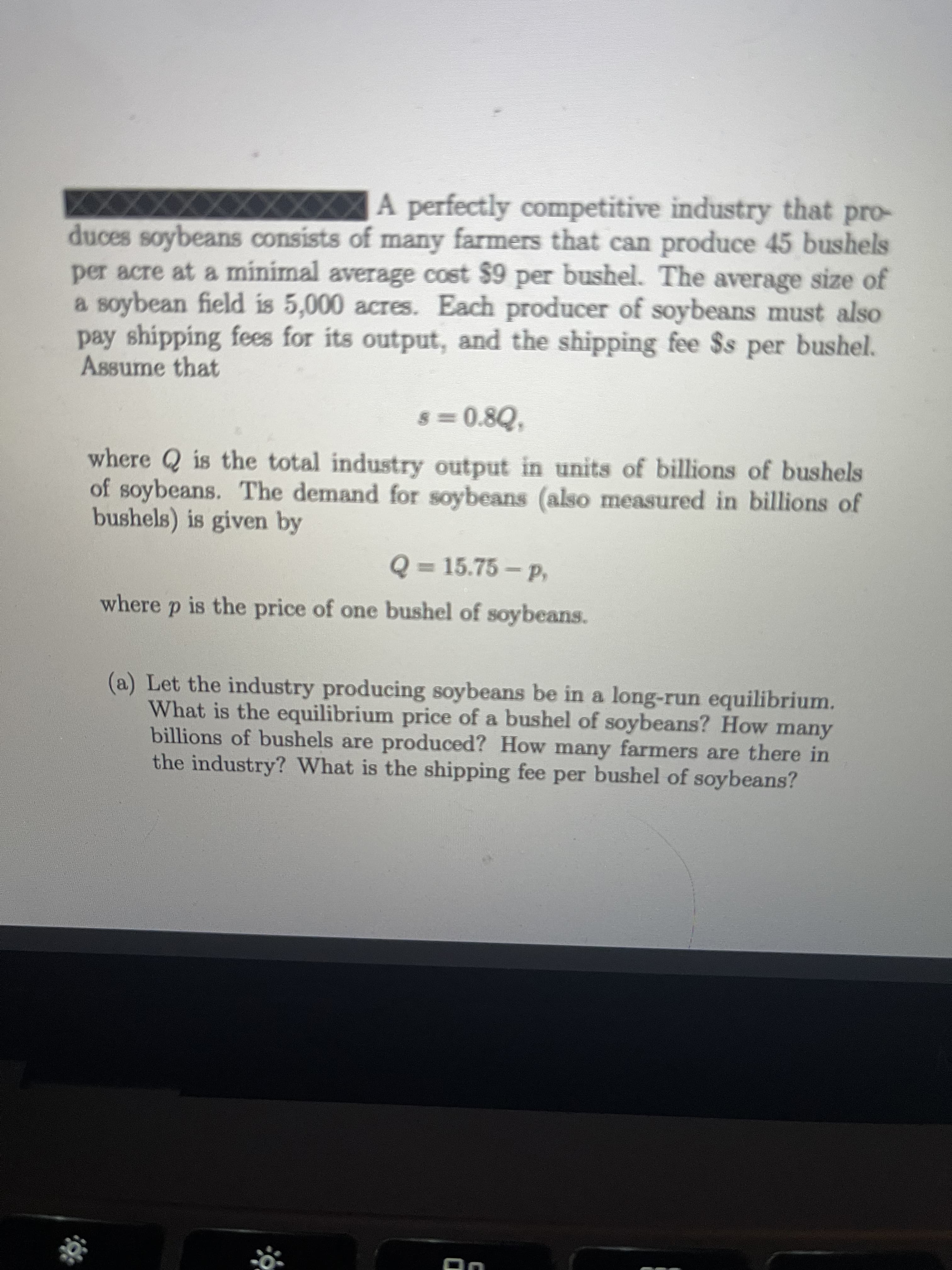(a) Let the industry producing soybeans be in a long-run equilibrium. What is the equilibrium price of a bushel of soybeans? How many billions of bushels are produced? How many farmers are there in the industry? What is the shipping fee per bushel of soybeans? (b) Suppose that the demand for soybeans drops due to decreased im- port by China and becomes Q = 15.3 − p. In a new long run equilibrium, what is the equilibrium price of a bushel of soybeans? How many billions of bushels are produced? How many farmers are there in the industry? What is the shipping fee per bushel? (c) Calculate the change in the producers’ surplus between the situations described in (a) and (b). (d) Show that the decrease in the producers’ surplus equals to the decrease in the total shipping fees as the industry contracts incrementally from the equilibrium output in (a) to the equilibrium output in (b)
(a) Let the industry producing soybeans be in a long-run equilibrium. What is the
(b) Suppose that the demand for soybeans drops due to decreased im- port by China and becomes
Q = 15.3 − p.
In a new long run equilibrium, what is the equilibrium price of a bushel of soybeans? How many billions of bushels are produced? How many farmers are there in the industry? What is the shipping fee per bushel?
(c) Calculate the change in the
(d) Show that the decrease in the producers’ surplus equals to the decrease in the total shipping fees as the industry contracts incrementally from the equilibrium output in (a) to the equilibrium output in (b).

Trending now
This is a popular solution!
Step by step
Solved in 2 steps









